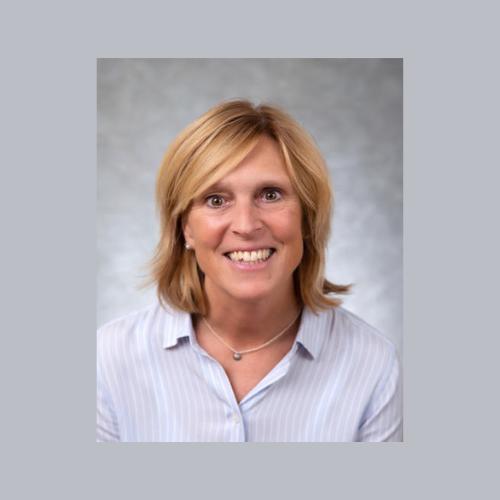Table of Contents
I published my Doctoral dissertation, “A Model for Integrating a Career Development Course Program into a College Curriculum,” in January 2011.
As I wrote,
“After teaching career development courses and coaching hundreds of college (and graduate) students for many years, it is the author’s belief that career development must become a mandatory part of the curriculum, where (a) everything a student has learned is synthesized into an awareness of the talents and skills they have developed, and (b) the student is then trained in how to sell that skill set to potential employers. It is proposed that this career curriculum be integrated into the general curriculum beginning during a student’s freshman year of college.”
I’ve designed and taught career courses to graphic artists, culinary students, fashion students, musicians, filmmakers, MBA students, and doctoral candidates. In these courses, I’ve worked with high school students as young as 14 to re-careering Baby Boomers as old as 84.
I’ve evangelized for my career training program for years, always searching for a university willing to test its viability.
Without my knowledge, Mary Cannon, BCC, MS. Ed. and Board Certified Coach, recently at the School of Business at the State University of New York at Geneseo, did exactly that.
Mary Cannon on Developing the Curriculum
Upon arrival at SUNY Geneseo School of Business, I was thrilled to learn about their (required) professional development career series of workshops. The program’s goal was to ensure that students leave with the confidence and skills to successfully transition between the academic and professional worlds. What didn’t make sense was that the participant feedback and graduate outcomes were low. These professional development workshops did not have the intended impact.
I dove into researching career curricula to improve outcomes and feedback. It was at this time that I discovered Dr. Austin’s dissertation. His focus on the importance of experiential instructional design resonated with me. In my previous years of teaching, he helped me realize that content drives design. For example, I taught my accounting classes differently than my entrepreneurial classes. Dr. Austin’s work allowed us to move forward as we tapped into his years of career experience and insight. Furthermore, I used his dissertation to persuade stakeholders of the value behind experiential design.
Instructional Design for Career Development
When proposing the instructional design for the workshops, I quoted from Dr. Austin’s dissertation:
- Career development coursework is enormously relevant to the needs of students.
- Experiential learning creates meaning from direct experience and reflection on doing instead of rote learning.
- An effective experiential facilitator can immerse participants in the learning environment, stimulating their imagination and encouraging students to gain new knowledge from both their peers and the environment.
- Base successful learning on participation and practice.
- The author’s role in designing the career development course program is to create environments where students can be active learners.
The nine professional development workshops were redesigned using Dr. Austin’s insights in his dissertation. Since the relaunch in the Fall of 2019, he has given 3,000+ students an incredible gift.
The Success of the Career Development Program
The (redesigned) series of workshops won an “Innovative Programming” award from the State University of New York Career Development Organization, supporting 64 colleges and universities. It has consistently earned feedback ratings such as “93% of students either agreed or strongly agreed the professional development workshop they attended was helpful to their career development.”
Lastly, 94%-100% of our 2021 School of Business graduates found employment or enrolled in grad school seven months after graduation. Post redesign, the graduate outcomes for our accounting students improved by 6%, Business Administration improved by 24%, and Economics graduate outcomes improved by 29%.
I remain grateful to Nick Palumbo, a statistical genius and SUNY Geneseo’s Assistant Dean of Students for Leadership and Service. He provided the “proof,” designing multiple tracking systems and collating the participant feedback from thousands of surveys.
Chaz Austin on the Relevancy of the Career Development Program
The program requires collaboration between students, faculty, administration, parents, alums, and the business community. The workshops and courses must be mandatory for maximum efficacy. I have hundreds of individual testimonials about the effectiveness of my work. My goal is to replicate and adapt what Mary has done at SUNY Geneseo. Mary and her team provided exactly the hard data I was looking for.
Mary did it right. She got buy-in from the School of Business and the alums. Additionally, she also structured the program in such a way as to provide enough time for the participants to develop what I call a “self-marketing mindset.” Her program created safe environments and stressed the relevance of the work. Mary developed a community in which students would embrace the value of these workshops.
Mary Cannon on the Foundations of the Program
There are nine workshops in the series:
- Designing Your Life
- LinkedIn: Creating a Professional Profile
- Introduction to Resumes
- Advanced Resumes
- Interviewing for Success
- Advanced Interviewing
- Networking 101
- Job Search Strategies
- Transitioning to the World of Work
For colleges and universities interested in designing experiential career workshops, we suggest facilitators consider the following:
- Express respect for the students’ perspectives and time. I began each workshop with an array of eye rolls as the participants had other places to be. To capture their interest, I immediately shared the value of the learning objectives via their lens. I followed this by sharing my understanding of their many commitments. Out of respect for their time, I promised them they would leave with a handful of valuable tools they could use immediately or pull out of their back pocket when ready.
- Build in time to create a safe, comfortable environment. The workshop participants didn’t know each other and ranged from freshmen to Masters students. Experiential design requires active involvement. Since I was going to ask them to share personal information (i.e., practice interviewing or networking), I prioritized dedicating time at the beginning of the class for all to get to know each other.
- Continuously update the content to ensure alignment with best practices. The content was updated each semester, driven by weekly conversations with students immersed in the application process, recruiters, alums, Human Resource experts, and faculty. In my time as a coach, interviews and events went fully virtual, Handshake disrupted the recruiting process, and the Applicant Tracking Systems drove resume design.
- Build connections by making it easy for the participants to follow up by ensuring easy access to additional resources. For example, demo the Career Design website (“Make an appointment” tab) or encourage them to meet visiting alumni.
Chaz Austin on the Future of Career Development
After 12 years in business education and over four years as a Career Coach, Mary has begun her own practice. Cannon Career Coaching, LLC specializes in 1:1 career coaching and supporting employers as they recruit, onboard, and retain Gen Z. SUNY at Geneseo plans to continue its Professional Development Program.
My goal is to have programs like Mary’s become a mandatory part of the curriculum at every college and university in the United States. For further information, see the resources in my bio.
Stay Connected with Career Development on edCircuit.




